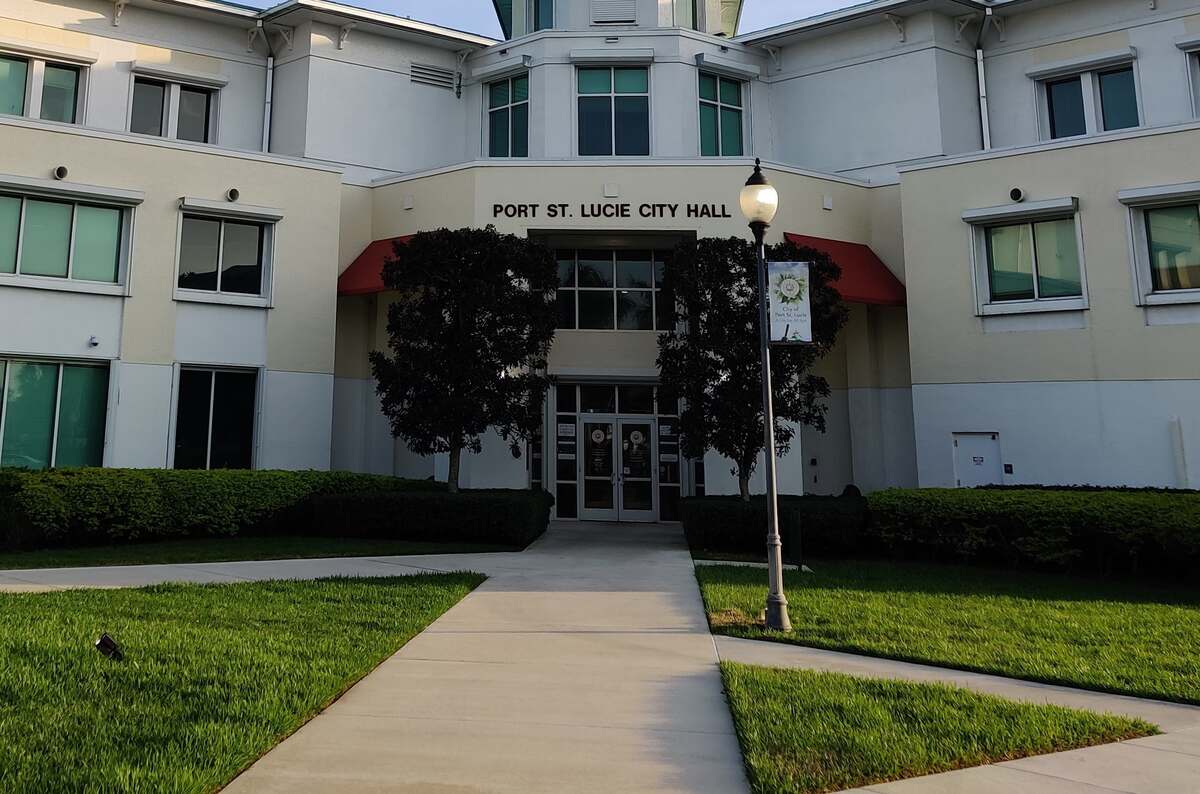
You’ve just returned from playing golf at PGA Village and as you relax on your front porch watching the sunset, you can’t stop looking at your front lawn, which you nicknamed “the hot mess.” You wish your lawn looked like the golf course and wonder which are the best grass types for Port St. Lucie.
LawnStarter has the answers. We’ll show you how to transform your “hot mess” with these five warm-season grasses well-suited for our Treasure Coast lawns:
After detailing each grass type, we’ll show you how to choose the best grass type for your PSL lawn.
Let’s dive in:
Bahiagrass
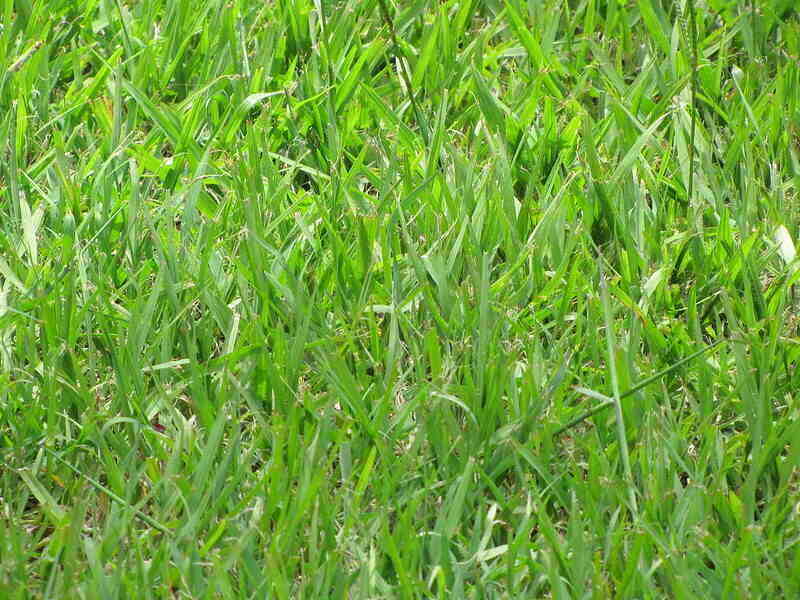
Photo Credit: Forest and Kim Starr / Flickr / CC BY 2.0
Bahiagrass is a popular low-maintenance lawn grass here in Port St. Lucie. It adapts and persists better than other grasses in infertile, sandy soils because it requires minimal water and fertilizer and forms an extensive, deep-root system.
However, you will sacrifice that “carpet-like” look synonymous with other warm-season grasses in favor of less maintenance.
Bahiagrass is a warm-season grass known for its drought tolerance. Unlike other grasses, it will go dormant during extended periods of drought and turn brown. To maximize its growth potential, an irrigation system might be beneficial to provide water during a drought and prevent browning.
- Classification: Warm-season grass
- Spreads by: Stolons
- Shade tolerance: Low, but more shade-tolerant than Bermudagrass.
- Drought tolerance: Moderate
- Foot traffic tolerance: Low
- Maintenance needs: Low fertility requirements. Expect frequent mowing.
- Mowing height: Ideal grass height is 3 to 4 inches.
- Potential for disease: Good resistance to disease and insect infestations
- Soil pH: 5.5 to 6.5
- Soil type: Performs well in sandy loam soils but tolerates a wide range of soils, including soils with low fertility
Other notes: Bahiagrass requires less maintenance than Bermudagrass and St. Augustinegrass.
Grass Seed Options
Pensacola Bahiagrass:
– Scotts Turf Builder Pensacola Bahiagrass (5 lb. bag)
– Hancock Seed Co. Pensacola Bahiagrass Seed (5 lb. bag)
– SeedRanch Pensacola Bahiagrass Seed (10 lb. bag)
Argentine Bahiagrass:
– Scotts Turf Builder Argentine Bahiagrass (10 lb. bag)
– Hancock Seed Co. Argentine Bahiagrass Seed Mix (25 lb. bag)
St. Augustinegrass
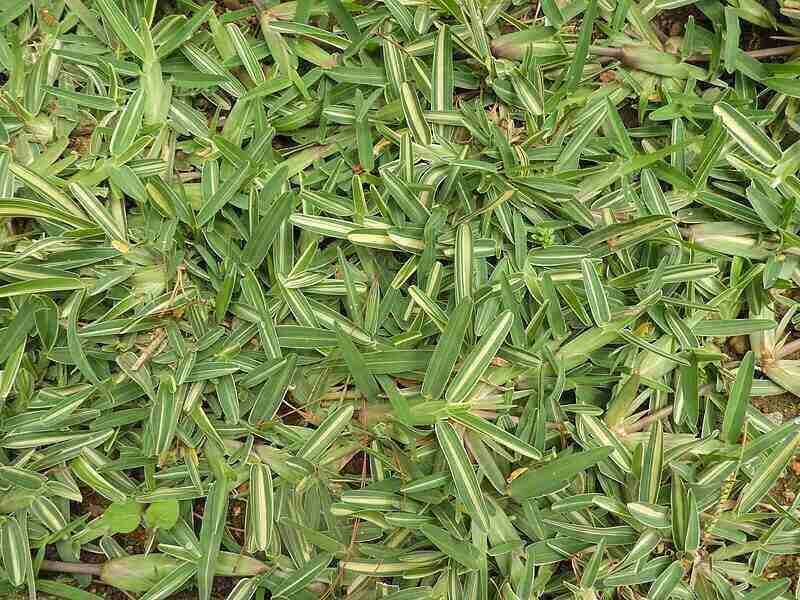
Photo Credit: Yercaud-elango / Wikimedia Commons / CC BY-SA 4.0
St. Augustinegrass is known for its green-blue hue and is a popular turfgrass choice for lawns across Florida. This warm-season grass has a fairly good tolerance for most soil types and salt (which makes it good for hurricane-resistant landscaping).
Although St. Augustinegrass can handle varying soil conditions, it’s not a set-it-and-forget-it type of grass. For the first three months after establishment, it requires more attention.
For example, even after it’s established, St. Augustinegrass requires supplemental irrigation and regular fertilization. St. Augustinegrass needs about 1 inch of water per week to survive.
- Classification: Warm-season grass
- Spreads by: Stolons
- Shade tolerance: Moderate. It is the most shade-tolerant warm-season grass.
- Drought tolerance: Moderate to high
- Foot traffic tolerance: Low
- Maintenance needs: Needs frequent mowing due to fast growth rate; develops thatch easily; needs regular fertilization
- Mowing height: Set the mowing height between 3.5 and 4 inches.
- Potential for disease: Moderate to high
- Soil pH: 6-7.5
- Soil type: Tolerates many soil types; prefers moderately fertile and moist (not waterlogged) soils; doesn’t tolerate soil compaction
Other notes: St. Augustinegrass does not produce viable seed, and therefore you cannot buy it at your local garden center. As a result, to get a great-looking lawn, sod or plugs are your best options.
When mowing St. Augustine, ensure your lawn mower has sharp blades. Dull blades leave a ragged look and yellow color, encourage lawn diseases, and can damage turf.
Grass Plug Options:
– Seed Ranch St Augustine Seville Grass Plugs (2 Trays)
– Seed Ranch St Augustine Floratam Grass Plugs (2 Trays)
Zoysiagrass
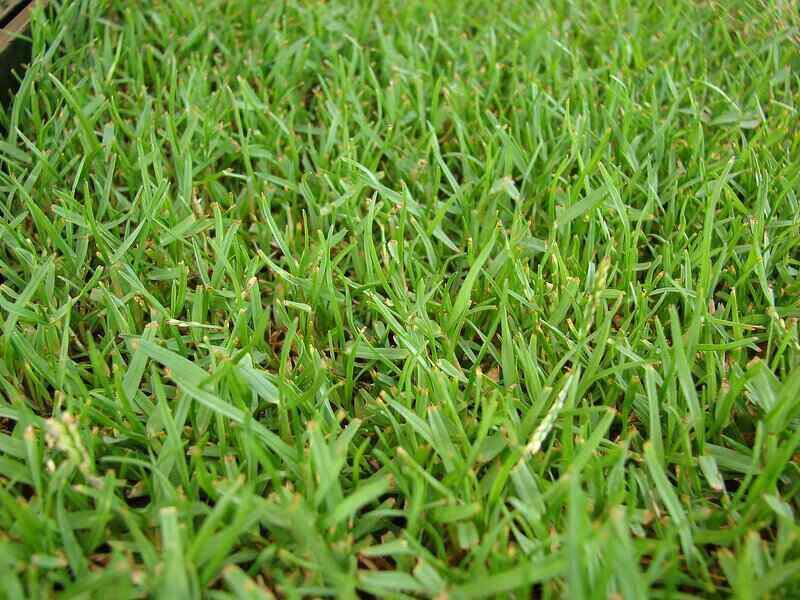
Photo Credit: Forest & Kim Starr / Wikimedia Commons / CC BY 3.0 US
Zoysiagrass is renowned for its hardiness, drought tolerance, and ability to handle heavy foot traffic (although it does recover slowly from extensive damage). Interestingly, this grass got its name from 18th-century Austrian botanist Karl von Zois.
Depending upon the cultivar, Zoysia can be an option for areas with salty conditions and various soil types. Zoysia ‘matrella’, also known as Manilagrass, can handle salt and shade and resembles Bermudagrass in texture, color, and quality.
Zoysia’s unique texture lends itself well to commercial and residential landscapes or even sports fields. It’s particularly popular on golf courses, where its density and tolerance for moderate shade and low mowing heights make it ideal for greens, roughs, fairways, and teeing sites.
- Classification: Warm-season grass
- Spreads by: Stolons and rhizomes
- Shade tolerance: Moderate
- Drought tolerance: Moderate
- Foot traffic tolerance: High, but recovers slowly from damage
- Maintenance needs: Low nitrogen fertilization requirements, although it’s prone to thatch buildup.
- Mowing height: Set mowing height between 1 and 2 inches.
- Potential for disease: Good disease tolerance overall
- Soil pH: 6-6.5
- Soil type: Well-draining, some cultivars are more tolerant of a wide range of soils than others
Other notes: Zoysia can spread into ornamental beds and across property lines, but its slow growth habit makes it easier to control than Bermudagrass. So, be sure to keep an eye on it. You’ll surely be in trouble if it tiptoes onto your neighbor’s property!
Grass Plug and Seed Options:
– Zoysia Plugs (50 Large Grass Plugs)
– Zoysia Plugs (50 Full & Lush Grass Plugs)
– Zoysia Plugs (100 Plugs)
– Zoysia Emerald Grass Seeds (1/8 lb. of seeds)
– Zenith Zenith Grass Seeds (1/8 lb. of seeds)
Bermudagrass
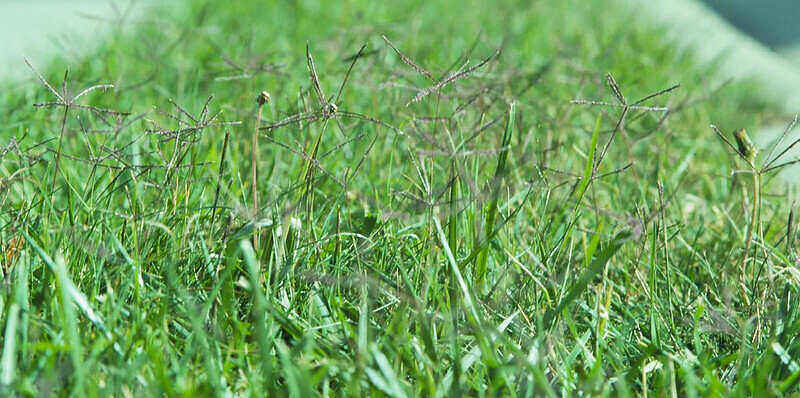
Photo Credit: Matt Levin / Flickr / CC BY-SA 2.0
Bermudagrass is known for its heat and drought tolerance, making it ideal for Florida’s hot and humid climate. Bermudagrass can tolerate heavy traffic and requires full sunlight to grow properly. Shade can limit its growth and ability to thrive.
High maintenance, though, is Bermudagrass’s middle name. This grass needs frequent mowing, fertilization, dethatching, and is prone to insects. It grows at an accelerated rate, making it look like weeds if left unchecked. That being said, it is a strong and resilient type of grass commonly used for lawns, golf courses, and sports fields.
- Classification: Warm-season grass
- Spreads by: Stolons and rhizomes
- Shade tolerance: Low; thrives in full sun
- Drought tolerance: High
- Foot traffic tolerance: High
- Maintenance needs: Needs frequent mowing due to fast growth rate; develops thatch quickly; needs regular fertilization.
- Mowing height: Set the mowing height between 0.5 and 1.5 inches for hybrid Bermudagrass cultivars. Mow common Bermudagrass down to 1.5 to 2.5 inches.
- Potential for disease: Good disease resistance, although diseases are common; low resistance to insects.
- Soil pH: 6-6.5
- Soil type: Tolerates most soil types
Other notes: A great option for backyards where kids and pets play because it withstands heavy foot traffic.
Grass Seed Options:
– Pennington Bermudagrass Bare Spot (5 lb. bag)
– Pennington Smart Seed Bermudagrass Mix (8.75-lb. bag)
– Scotts Turf Builder Bermudagrass (10-lb. bag)
– Hancock Seed Co. Bermudagrass (50-lb. bag)
Centipedegrass (Honorable Mention)
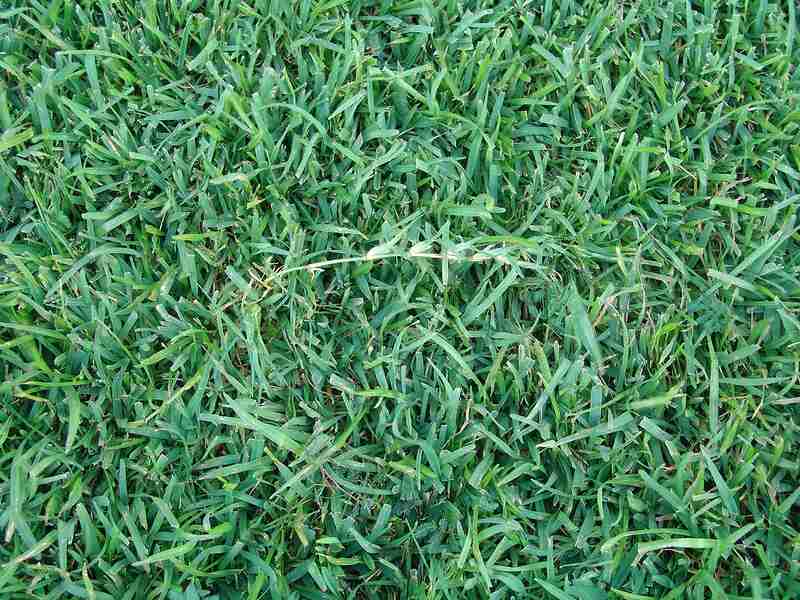
Photo Credit: James Becwar / Wikimedia Commons / CC0 1.0
Centipedegrass, also known as the “lazy man’s grass,” is an option if you don’t want to put much time and effort into fertilizing or maintaining your lawn. This warm-season grass is a relatively slow-growing species compared to fast-growing grasses like Bermuda and requires minimal maintenance to keep it looking sharp.
This lazy man’s grass is good news for busy folks because it only needs to be mowed every 7-14 days during the season. As long as you keep the length to 1.5 to 2.5 inches, centipedegrass will remain happy. This height ensures that the grass will develop a deeper and more extensive root system, providing better resistance against drought and stress caused by nematodes.
Centipedegrass has a natural yellow-green hue that you might find objectionable. The particular hue indicates good health, so if you attempt to darken it (force a richer color with extra nitrogen), you will destroy the lawn.
‘Hammock’ Centipedegrass
Centipedegrass, aptly named because the stolons have a creeping growth habit that resembles a centipede, is primarily used in North Florida lawns, so here’s how centipedegrass earned an honorable mention on our list:
The University of Florida patented a centipedegrass variety called “Hammock,” specifically developed for South Florida lawns. Hammock should be grown only in areas south of Orlando for best results, and as such, Hammock is a suitable cultivar that can tolerate more of PSL’s sandy soils and nematode issues.
- Classification: Warm-season grass
- Spreads by: Stolons
- Shade tolerance: Moderate
- Drought tolerance: Moderate
- Foot traffic tolerance: Low
- Maintenance needs: Low; fertilizing centipedegrass more than it needs will harm the grass, increasing its thatch layer, decreasing its cold tolerance, and putting it at higher risk for diseases.
- Mowing height: Set the mowing height between 1 and 2 inches.
- Potential for disease: Highly susceptible to large patch.
- Soil pH: 5-6
- Soil type: Acidic, infertile, at least moderately good drainage (very dense, clay soils produce poor results)
Other notes: Historically, nematode damage limited the use of centipedegrass in South Florida’s sandy soils. Still, as the new cultivars are developed, the outlook is brighter to help tackle some of PSL turf’s challenges. So, remember, if you choose centipedegrass for your lawn, make sure you get the Hammock variety.
Grass Seed Options:
– Gulf Kist Coated Centipedegrass Seeds (1 lb.)
– Scotts EZ Seed Patch and Repair Centipedegrass (3.75 lbs.)
– TifBlair Centipedegrass (5-lb. bag)
– Pennington Centipedegrass and Mulch (5-lb. bag)
How to Choose the Best Grass Type for your PSL Lawn
Port St. Lucie (PSL) has the perfect climate in which to grow flourishing warm-season grasses. With temperatures typically ranging from 75 degrees and above, sandy soil, and periods of drought, these grasses have the perfect environment to thrive.
But which is the best grass type for your lawn?
Stick with the warm-season grasses — they can withstand the hot, humid summers, then assess your lawn (do you have a lot of shade or have kids and pets tromping all over your yard?) in light of these factors to help you make your choice:
- Full Sun
- Shade
- Heavy Foot Traffic
- Drought Tolerance
- Minimal Maintenance and Mowing
Full Sun
Bermudagrass, the “sun-worshipper,” outshines the other grasses when it comes to needing full sunlight exposure. It loves direct sunlight and will struggle to survive in shady spots.
Shade
St. Augustinegrass is the most shade-tolerant warm-season grass. This grass thrives better in the shade than Bermudagrass. This makes it an ideal choice for lawns with a few trees and other sources of shade.
Heavy Foot Traffic
Bermudagrass and Zoysiagrass are the best choices for lawns with a lot of foot traffic. Whether throwing a backyard party or letting the kids and pets run around, these grasses hold up better to all the wear and tear.
Drought Tolerance
They say camels can go for days without water traveling in the desert. If one of these grasses were a camel, it would be Bermudagrass. This grass can withstand long periods without supplemental water, protecting your lawn against damage due to lack of moisture. The second-place choice would be Zoysiagrass.
Minimal Maintenance and Mowing
Centipedegrass wins “best in show” for requiring the least mowing effort. With its corresponding nicknames — “businessman’s grass” or “lazy man’s grass,” this grass lets you be more of a couch potato or play more golf rounds at your favorite course.
When to Call a Lawn Care Pro
Still uncertain about which grass to choose for your lawn? Or maybe you’d just rather someone take yard work off your to-do list?
Contact a local Port St. Lucie lawn care pro to put your mind at ease. LawnStarter’s lawn care pros have the expertise, knowledge, and experience to keep your PSL lawn looking sharp all growing season long.
LawnStarter participates in the Amazon Services LLC Associates Program, an affiliate advertising program. LawnStarter earns revenue from products promoted in this article.
Main Image Credit: Pexels